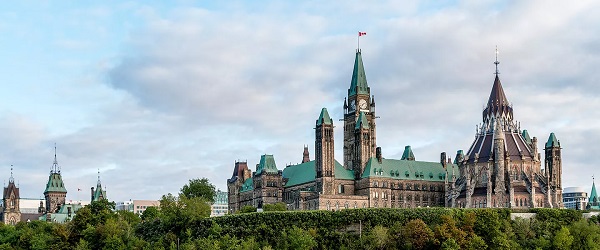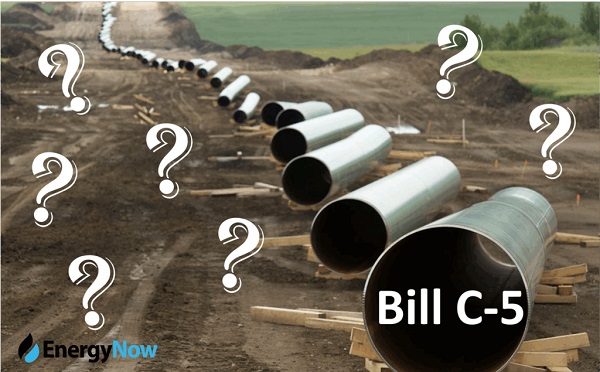Alberta
Big boost for energy companies working on emission reduction innovations

From the Province of Alberta
In October 2019, Emissions Reduction Alberta (ERA) launched the Natural Gas Challenge and invited technology developers to share project concepts for innovation opportunities in Alberta’s natural gas industry.
Alberta’s government is providing $58 million through ERA to support this opportunity to create jobs in the natural gas sector.
Funding recipients include a project that uses artificial intelligence to locate and measure methane emissions, and a project to produce renewable natural gas from biogas at an agricultural facility that will be the first of its kind in Alberta.
The 20 new projects have the potential to reduce a cumulative one million tonnes of emissions by 2030 – the same as taking about 750,000 cars off Alberta’s roads. These projects will also get Albertans back to work by creating more than 750 new jobs when they are needed most.
“Alberta is already a leader when it comes to our environmental footprint, and our ongoing work with Emissions Reduction Alberta will help us become even better.”
Projects were selected through ERA’s competitive review process. Experts in science, engineering, business development, commercialization, financing, and greenhouse gas quantification reviewed 117 submissions and chose projects based on the strongest potential for success.
“With Alberta’s 300-year supply of affordable natural gas, a technically skilled workforce and world-class environmentally responsible facilities, there is tremendous opportunity for Alberta to compete with international markets. Funding opportunities like this, in partnership with Emissions Reduction Alberta, are critical to attracting investments that will grow Alberta’s economy by reducing upfront costs, while reducing our province’s share of global emissions.”
Government funds ERA through the Technology Innovation and Emissions Reduction (TIER) system. TIER is an improved system to help energy-intensive facilities find innovative ways to reduce emissions and invest in clean technology to stay competitive and save money. Facilities can pay into a TIER Fund, which is used for innovative and cleaner Alberta-based projects like those selected under the Natural Gas Challenge.
ERA’s funding model requires that every dollar committed to an initiative is matched or exceeded by additional investments, which ensures there is a market demand for the technology. Government’s $58-million investment through ERA has been more than doubled by private and public investment to stimulate the economy, lower emissions and create jobs, leading to a total of $155 million in funding.
“Investing in the next wave of technological advancements will help Canada’s natural gas industry achieve new efficiencies, reduce costs, and continue to drive world-leading environmental performance.”
A complete list of the successful Natural Gas Challenge projects can be found here.
“We are grateful for ERA’s support to help fund Canadian Natural’s ALT-FEMP project. By working together, we will develop and pilot technologies that can be adopted across the industry to enable early detection of methane emissions through cost-effective methods, ultimately accelerating industry’s reductions in greenhouse gas emissions.”
“This project is an important first step for Alberta, which has all the ingredients to be a leader in the hydrogen economy – including the ability to produce a near zero-emission hydrogen at a lower cost than most jurisdictions in the world.”
Quick facts
- In 2018, Alberta produced almost 70 per cent of the marketable natural gas in Canada.
- ERA works with government, industry and innovators to support technologies that reduce greenhouse gas emissions.
- Since 2009, ERA has committed $607 million in funds from industrial carbon pricing toward 183 projects worth $4.1 billion that are reducing emissions, keeping industries competitive, and leading to new investment opportunities.
- These 183 projects are estimated to deliver cumulative reductions of 34.8 million tonnes of emissions by 2030.
If successful, these technology innovations will lead to cumulative GHG reductions of almost one million tonnes of CO2e by 2030—equivalent to the GHG emissions from 750,000 passenger vehicles driven for one year. It is anticipated these projects will also deliver approximately 760 new jobs.
Funding is being sourced from the carbon price paid by Large Final Emitters in Alberta through the Technology Innovation and Emissions Reduction (TIER) fund.
The following projects were selected for funding:
UPSTREAM PROJECTS:
MultiSensor Canada Inc.
Methane Imaging Solution for Continuous Leak Detection and Quantification for Tank Emissions and Facility Monitoring
Total project value: $3,200,000 | ERA commitment: $1,600,000
Permanent installation and demonstration of an infrared camera at 100 well sites to provide continuous leak detection and quantification for tank emissions and facility monitoring.
Qube Technologies
Emissions Reductions Through Artificial Intelligence
Total project value: $16,200,000 | ERA commitment: $4,000,000
Deployment of an industrial device designed to collect large quantities of data to use artificial intelligence and machine learning techniques to better quantify, locate, and classify emissions.
University of Calgary:
Field-Scale Deployment and Acceleration of Made-In-Alberta Technology for Fugitive Emissions Detection and Reduction
Total project value: $3,200,000 | ERA commitment: $1,600,000
Full-scale, field pilot of a new vehicle-based technology designed for equipment-level emissions screening to support effective regulatory leak detection and repair.
Canadian Natural Resources Limited
Fugitive Emissions Study Using Aerial Detection Technology
Total project value: $1,900,000 | ERA commitment: $930,000
Pilot project of both aerial screening technology and ground-based detection at conventional oil and gas facilities to validate technology performance and inform a broader Alternative Fugitive Emissions Management Program (FEMP).
Challenger Technical Services
Multi Component Downhole Injection System
Total project value: $2,600,000 | ERA commitment: $1,000,000
Development, testing, and validation of a multicomponent downhole injection system that uses epoxy resins to rapidly seal leaking oil and gas wells and eliminate surface casing vent flow.
Petroleum Technology Alliance Canada (PTAC)
Affordable Zero-Emission Fail-Safe Electric Dump Valve Actuator (EDVA) Phase 2
Total project value: $2,200,000| ERA commitment: $550,000
Applied research, prototype design and development, and field pilot testing of an electrically-driven valve actuator that is more compact, powerful, and lower maintenance than alternative pneumatic options.
Kinitics Automation Limited
Valve Actuator for Gas Producers
Total project value: $1,100,000 | ERA commitment: $550,000
Testing a novel electric actuator at 15 well sites in Alberta to validate the technology as a cost effective, technically viable alternative to eliminate venting from established pneumatic devices.
Westgen Technologies Inc
Unlocking EPOD Economic Zero Bleed Pneumatic Instrument Air Retrofit Solution
Total project value: $4,000,000 | ERA commitment: $1,300,000
Demonstration of a solar-hybrid power generation system for remote well sites to provide reliable electricity to prevent gas venting from pneumatic devices in a cost-effective manner.
Modern Wellbore Solutions
Demonstration of a Full-Scale Multilateral Junction Assembly
Total project value: $12,100,000 | ERA commitment: $3,500,000
Full-scale deployment of a multilateral junction tool assembly that will allow natural gas operators to drill, complete, and operate multi-branched wells for unconventional reservoirs. The technology reduces emissions by enabling lateral junctions rather than requiring separate wells.
Tourmaline Oil Corp.
Natural Gas Mobile Unit for Drilling Rig Power Generation
Total project value: $8,000,000 | ERA commitment: $3,200,000
Pilot demonstration of a plug and play, mobile power generation system for drilling rigs that uses smart energy to automatically start and stop generators to match the power demand of the rig.
DOWNSTREAM AND VALUE-ADDED PROJECTS:
ATCO Gas and Pipelines Ltd.
Fort Saskatchewan Hydrogen Blending
Total project value: $5,700,000 | ERA commitment: $2,800,000
Pilot project to test hydrogen blending in ATCO’s Fort Saskatchewan natural gas distribution system. The project will source and test equipment and determine applicability of existing codes, standards, and legislation.
Ekona Power Inc.
Development and Field Testing of a Tri-Generation Pyrolysis (TGP) System for Low-cost, Clean Hydrogen Production
Total project value: $13,800,000 | ERA commitment: $5,000,000
Prototyping a new approach to converting natural gas to hydrogen and a solid carbon by-product representing a new pathway to produce zero-emissions hydrogen, electricity, and other products by decarbonizing natural gas.
Standing Wave Reformers Inc.
A New Wave in Hydrogen Production
Total project value: $8,200,000 | ERA commitment: $3,000,000
Design optimization, system integration, pilot demonstration, techno-economic analysis, and advancement of commercial deployment plans for a technology system to decarbonize natural gas.
ATCO Gas and Pipelines Ltd.
ATCO and Future Fuel RNG
Total project value: $15,900,000 | ERA commitment: $7,900,000
First-of-its-kind commercial demonstration to produce renewable natural gas (RNG) to be sold and used within the province in Compressed Natural Gas (CNG) fleet vehicles and commercial applications.
Sustainitech Inc.
Co-Locating Natural Gas and Indoor Agriculture for Alberta’s Future
Total project value: $17,900,000 | ERA commitment: $5,000,000
Design, construction, and operation for a first-of-kind commercial deployment of a modular farming system that combines automation, hydroponics, adsorption cooling, and advanced lighting to grow crops.
Enersion Inc.
Greenest Natural Gas-Powered Quad-generation with a 41% GHG Reduction
Total project value: $3,800,000 | ERA commitment: $1,800,000
Technology that uses natural gas to generate electricity, cooling, and heating in an integrated package for multiple applications, including industrial, agricultural, commercial, and residential sectors
Stone Mountain Technologies, Inc.
Demonstration of Thermally Driven Heat Pumps for Residential Heating Applications
Total project value: $2,000,000 | ERA commitment: $990,000
Design and prototyping of technology that uses natural gas to drive a heat pump cycle. Unlike electrically-driven heat pumps, the technology is ideal for cold climates.
Anax Power
Turboexpander Project
Total project value: $6,200,000 | ERA commitment: $2,400,000
Installation and operation of technology that provides clean, distributed electricity from the pressure and flow of natural gas without combustion.
Innovative Fuel Systems
Advanced Dual-Fuel System Commercial Demonstration
Total project value: $2,800,000 | ERA commitment: $1,200,000
Commercial validation of technology that allows heavy duty truck engines to displace up to 50 per cent of their diesel with cleaner burning natural gas.
Converting Landfill Gas to Renewable Natural Gas
Total project value: $25,000,000 | ERA commitment: $10,000,000
The project will explore opportunities to upgrade landfill gas (LFG) at Clover Bar Landfill and inject it into Alberta’s natural gas system as renewable natural gas (RNG). Stakeholders in the Clover Bar Landfill, the City of Edmonton and Capital Power, are exploring these possible opportunities.
All recipients are required to produce a final outcomes report that will be shared publicly for the broader benefit of Alberta. All projects involve field piloting, demonstration, or commercial deployment of technology within the province.
Click the links below for more details on ERA’s Natural Gas Challenge:
- Full Project Proposal Guidelines
- Call for Expressions of Interest Guidelines
- Eligible Expense and Cost Instructions
- Privacy, Confidentiality, Data, and Security Policy
- Frequently Asked Questions
- Watch the Informational Webinar
- Learn more about ERA’s funding process.
WHY TARGET THE NATURAL GAS VALUE CHAIN?
Natural gas is a critical resource, providing heat and power for Alberta’s residential, commercial, and industrial sectors. It is the least GHG emitting of traditional fossil fuels, and a global shift toward natural gas from coal- and oil‑based resources is underway.
Canada is the fourth largest natural gas producer in the world, with net exports totaling $6.1 billion in 2018. Alberta produces almost 70 per cent of the marketable natural gas in the country. In 2017, the province emitted 35 million tonnes of CO2e from natural gas production and processing. A significant opportunity exists to improve cost competitiveness along Alberta’s natural gas value chain and reduce GHG emissions.
The Government of Alberta is committed to revitalizing Alberta’s natural gas sector. The province is developing and implementing a robust strategy with key recommendations from the 2018 Roadmap to Recovery Report, a document advising the government on reviving Alberta’s natural gas industry.
Alberta
Alberta Provincial Police – New chief of Independent Agency Police Service

Sat Parhar has been appointed as the first chief of the Independent Agency Police Service, marking the next step toward a new municipal policing option.
The appointment of a new chief for the Independent Agency Police Service (IAPS) marks the next step in giving municipalities a new option for local policing and builds on the work already underway for the agency to assume the police-like duties currently carried out by the Alberta Sheriffs. The IAPS will empower municipalities to adopt strategies that effectively respond to their specific safety concerns, enhancing public safety across the province.
Chief Parhar brings more than 25 years of policing experience, including senior roles with the Calgary Police Service, most recently as deputy chief. His frontline policing experience and deep understanding of Alberta’s complex and diverse public safety landscape positions him to lead the agency as it takes shape and begins its work as a new municipal policing option, keeping communities safe.
Once operational, the agency will strengthen Alberta’s existing policing model and complement the province’s current police services, which includes the RCMP, Indigenous policing services and municipal police. It will help fill gaps and ensure law enforcement resources are deployed efficiently to meet Alberta’s evolving public safety needs and improve law enforcement response times, particularly in rural communities.
“Appointing Chief Sat Parhar is a key milestone in Alberta’s plan to give municipalities a real choice in how their communities are kept safe. This is about building a modern police service that reflects the priorities of Albertans, strengthens local decision-making, and ensures every corner of our province, especially rural areas, can count on responsive, effective law enforcement. With his decades of experience and deep understanding of Alberta’s policing landscape, he is the right leader to bring this vision to life.”
“This appointment signifies a significant step forward in our efforts to establish a more robust, community-focused policing model that is better equipped to meet the unique needs of our local residents. Under Chief Parhar’s visionary leadership, we are confident that we will develop a modern, efficient police service that not only enhances public safety but also aligns closely with the priorities and values of Albertans. His experience and commitment are vital in shaping an IAPS that is responsive, transparent, and dedicated to fostering trust and collaboration within the community, ultimately ensuring a safer and more connected society for all.”
Chief Parhar’s immediate priorities will be to hire an executive team and commence organizational planning such as developing key recruitment, training and other operational policies. Chief Parhar’s appointment is the first step of many to establishing the IAPS.
“It’s an honour to take on this role and help shape a modern police service built for Alberta. My focus from day one will be on setting high standards for professionalism, building strong relationships with our partners and ensuring this service reflects the needs and priorities of the communities we serve.”
The Independent Agency Police Service was formally created through regulation following the passing of Public Safety Statutes Amendment Act, 2024. The agency will operate as an independent Crown corporation, and will be renamed the Alberta Sheriffs Police Service, with its head office located in Calgary. The IAPS will be operationally independent from the provincial government with civilian oversight, consistent with all police services in Alberta.
“When it comes to policing, municipalities like ours deserve a choice – especially when the current system leaves us disadvantaged simply because of our size. We look forward to learning more about what that alternative will look like once an Alberta police agency is fully established and the options are clear. For us, this is about fairness, sustainability, and ensuring municipalities have access to policing solutions that reflect both their needs and their realities.”
Quick facts
- The regulation establishes the IAPS Provincial Corporation and its governance structure including board of directors, board of director powers, financial responsibilities and accountabilities.
Related news
- Expanding municipal police service options (April 7, 2024)
Alberta
Pierre Poilievre – Per Capita, Hardisty, Alberta Is the Most Important Little Town In Canada
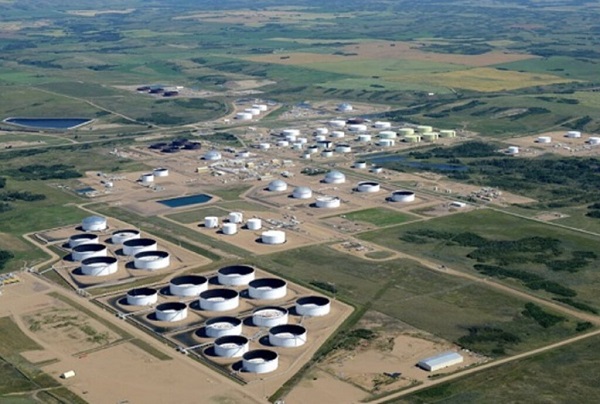
From Pierre Poilievre
-

 Business2 days ago
Business2 days agoOttawa Funded the China Ferry Deal—Then Pretended to Oppose It
-

 COVID-192 days ago
COVID-192 days agoNew Peer-Reviewed Study Affirms COVID Vaccines Reduce Fertility
-

 MAiD2 days ago
MAiD2 days agoCanada’s euthanasia regime is not health care, but a death machine for the unwanted
-

 Business1 day ago
Business1 day agoWorld Economic Forum Aims to Repair Relations with Schwab
-
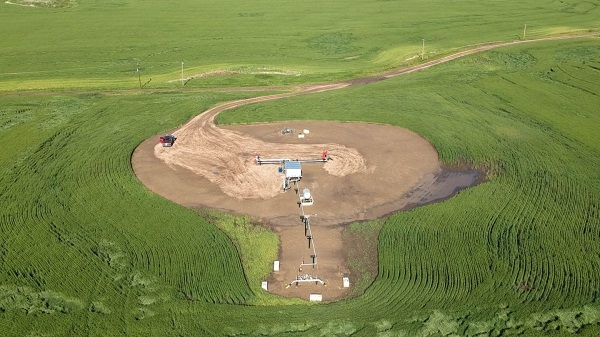
 Alberta2 days ago
Alberta2 days agoThe permanent CO2 storage site at the end of the Alberta Carbon Trunk Line is just getting started
-
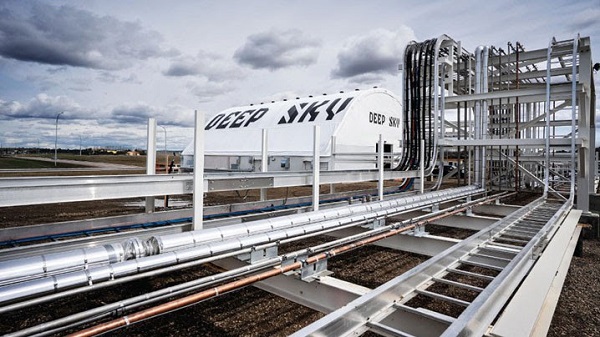
 Alberta1 day ago
Alberta1 day agoAlberta’s government is investing $5 million to help launch the world’s first direct air capture centre at Innisfail
-
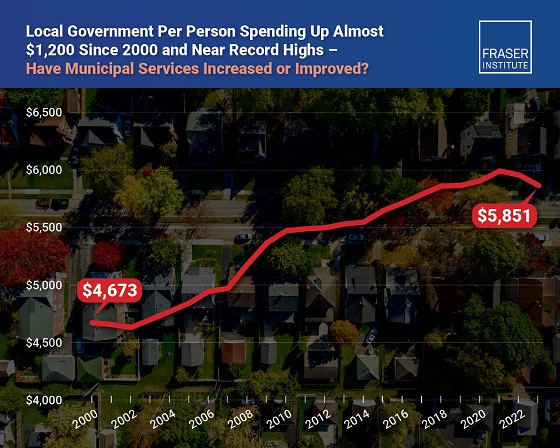
 Business2 days ago
Business2 days agoMunicipal government per-person spending in Canada hit near record levels
-

 Business1 day ago
Business1 day agoA new federal bureaucracy will not deliver the affordable housing Canadians need





